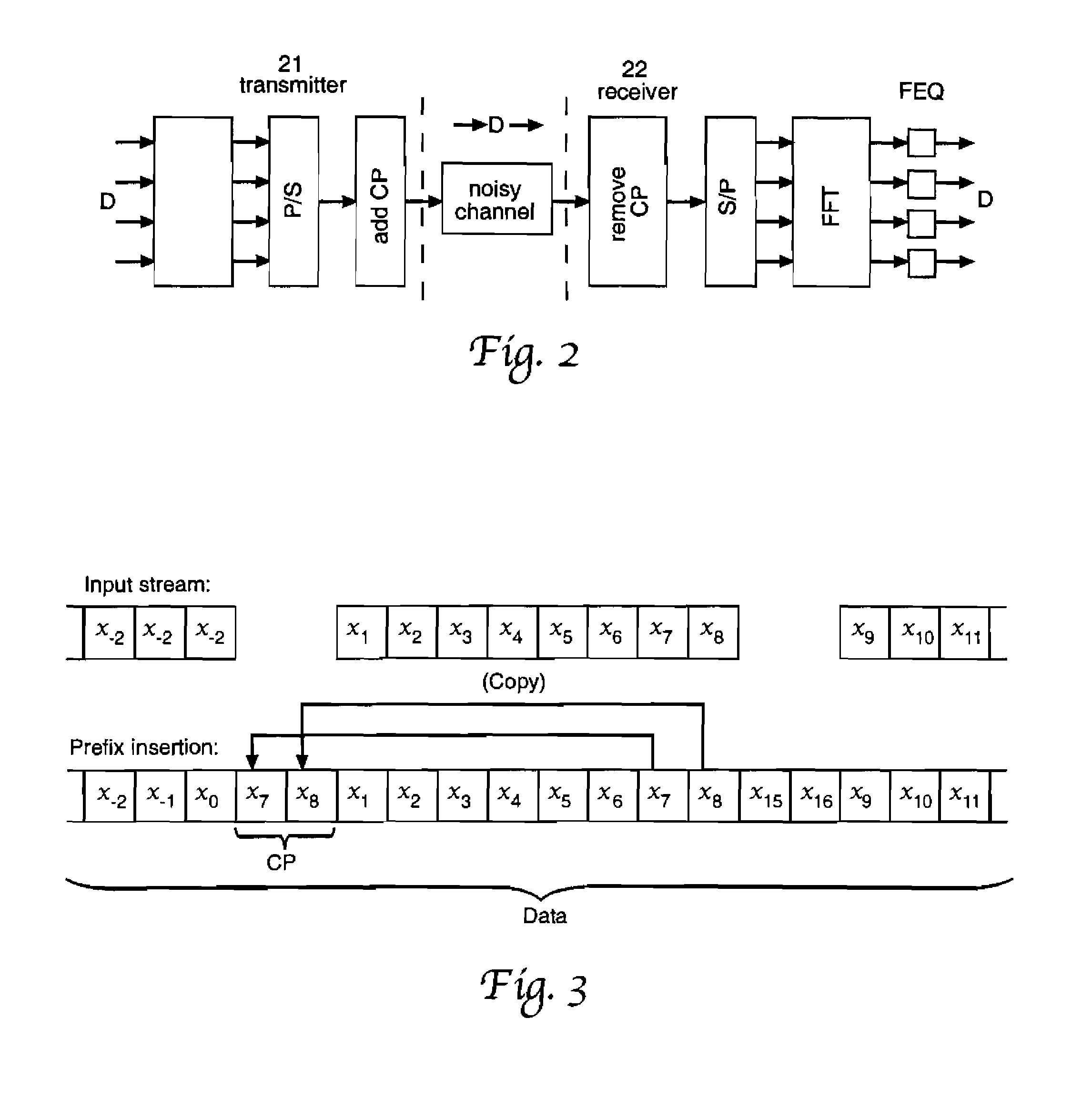Navigation and position determination with a multicarrier modulation signal of opportunity
a multi-carrier modulation and opportunity technology, applied in direction finders, instruments, measurement devices, etc., can solve the problems of not reducing gps outages, requiring communication between reference and mobile receivers, etc., to speed up calculation, reduce bandwidth, and minimize the amount of bandwidth that the reference receiver uses to transmit to the mobile receiver.
- Summary
- Abstract
- Description
- Claims
- Application Information
AI Technical Summary
Benefits of technology
Problems solved by technology
Method used
Image
Examples
Embodiment Construction
[0021]The geometry of the transceivers involved in a single time difference of arrival (TDOA) computation from a signal of opportunity is depicted in FIG. 1. Preferably, either multiple transmitters or multiple reference receivers are used to obtain multiple TDOA measurements and solve for an unknown transmitter position. For simplicity, FIG. 1 shows only one transmitter 17, one mobile receiver 15 and one reference receiver 10. The reference receiver 10 also has the ability to transmit to the mobile receiver 15
[0022]A signal of opportunity (SoOP) is any radio frequency signal, which is not specifically designed for navigational purposes. Three examples of signals of opportunity include broadcast signal carrier systems such as analog television broadcasts, amplitude modulation (AM) and frequency modulation (FM) radio signals. Cellular Communications and broadcast multi-carrier systems such as satellite radio, and the European digital video broadcast (DVB) and wireless networking stan...
PUM
 Login to View More
Login to View More Abstract
Description
Claims
Application Information
 Login to View More
Login to View More - R&D
- Intellectual Property
- Life Sciences
- Materials
- Tech Scout
- Unparalleled Data Quality
- Higher Quality Content
- 60% Fewer Hallucinations
Browse by: Latest US Patents, China's latest patents, Technical Efficacy Thesaurus, Application Domain, Technology Topic, Popular Technical Reports.
© 2025 PatSnap. All rights reserved.Legal|Privacy policy|Modern Slavery Act Transparency Statement|Sitemap|About US| Contact US: help@patsnap.com



